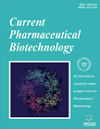-
oa Editorial [Hot topic:Expression and Refolding Technologies for Production of Recombinant Proteins (Guest Editors: Tsutomu Arakawa and Kouhei Tsumoto)]
- Source: Current Pharmaceutical Biotechnology, Volume 11, Issue 3, Apr 2010, p. 231 - 232
-
- 01 Apr 2010
- Previous Article
- Table of Contents
- Next Article
Abstract
Biotechnology industries commenced with the production of recombinant proteins for developing biopharmaceuticals. However, scientific development of recombinant technologies has contributed not only to protein pharmaceuticals but also to industrial enzymes, drug development and material sciences. Since the beginning of recombinant technology, numerous pharmaceutical proteins have been developed, covering tissue-type plasminogen activator, insulin, growth hormone, cytokines and various enzymes. Now therapeutic antibodies of both antagonistic and agonistic activities, receptors and various forms of biological modifiers occupy a large part of biopharmaceutical pipelines. A large fraction, e.g., 60-70 %, of these pharmaceutical proteins is produced in mammalian cells, mostly using Chinese hamster ovary (CHO) cells. So far all mammalian recombinant therapeutic proteins are secreted into the media and captured from the media by various separation technologies. The remaining portion of pharmaceutical proteins is presumably made using microbial cells, in particular Escherichia coli and yeast cells. Expression of pharmaceutical proteins in microbial cells can be directed into either cytoplasmic inclusion bodies or the secretory pathway for soluble, folded proteins. Cytoplasmic soluble expression has seldom been used for pharmaceutical proteins, although it is often used to produce reagent proteins. Cytoplasmic soluble expression has some disadvantages for pharmaceutical proteins, e.g., insufficient expression level, heterogeneous N-terminal processing and proteolytic cleavage. Considering the relative ease of cytoplasmic expression as inclusion bodies, there will be an opportunity for technology improvements in the refolding of insoluble proteins. Technological improvement of mammalian expression, including gene expression, host cell engineering, culture medium development and cell culture engineering, now made possible the expression of 10 g/L or higher in cell culture medium, as summarized in Chapter-1. It appears that more improvements will be made to increase the quality of products, which should make downstream capture, purification and separation process more efficient. Conversely, cytokines, intracellular signaling proteins, viral proteins and fragments or domains of such more complex proteins as receptors, antibodies and cell membrane-associated proteins may benefit from the development of novel nonmammalian expression system, which is of low cost and high efficiency. These proteins can be the target of drug candidates, vaccines, pharmaceutical proteins, antigens for pharmaceutical and diagnostic antibodies and reagents for cell culture. For example, recently recombinant proteins, upon delivery into cells, have been shown to reprogram the cells into pluripotent stem cells [1, 2]. Chapter-2 describes the transient mammalian expression of interleukins using fusion partners that help to enhance soluble protein expression. Non-mammalian expression systems include bacteria, yeast, other microbes and insect cells. Expression in these systems leads to either soluble protein or insoluble inclusion bodies (IBs). In both cases, numerous problems are often encountered, e.g., low expression, expression of soluble, but inactive proteins, or low yield following refolding. In these areas, there is always need for technical improvement. In fact, a topic covering “proteins difficult to express” or “proteins difficult to make” frequently appears in the scientific and commercial conferences. We have assembled various novel technologies that cover production of recombinant proteins that are “difficult to express” or “difficult to make” as introduced above. Recombinant expression may be formally divided into soluble and insoluble expression. Insoluble expression primarily occurs in cytoplasmic expression of Escherichai coli (E. coli), yeast and insect cells. When expressed proteins are directed to periplasmic space using a signal sequence, the transported proteins may have correct disulfide bonds, but may still form IBs. In this case, oxidative refolding is not required. Only solubilization is necessary. Since the cell wall of E. coli is permeable to low molecular weight compounds, folding or high solubility may be assisted by adding folding or solubility-enhancing additives into the culture media [3-5]. Soluble expression can occur four different ways. The most familiar one is extracellular expression using mammalian, yeast, insect or bacterial system. Periplasmic expression can also lead to soluble expression. Intracellular proteins can be expressed as soluble in cytoplasm of various host cells, or using cell-free system. When soluble expression of target proteins is difficult, one of the conventional approaches has been to fuse them with a soluble and stable fusion partners [6, 7]. Chapter-2 describes a transient mammalian expression of interleukins using two fusion partners. An unusual example of the fusion technology is with viral polyhedrin protein, which leads to formation of viral capsids containing a fusion of polyhedrin and target protein in the cytoplasm of host cells [8]. The expressed target proteins may be used as attached to viral capsids or cleaved from the polyhedrin proteins. Insect cells are also commonly used as a host cell for extracellular expression. A new host-vector system was developed for protein expression in Silkworm (Chapter-3). An efficient secretory expression system was developed with Brvebaccilus bacterium as described in Chapter-4. Cytoplasmic soluble expression of foreign proteins is often difficult, leading to formation of inclusion bodies (IBs). An approach often taken is to enhance in vivo folding....


